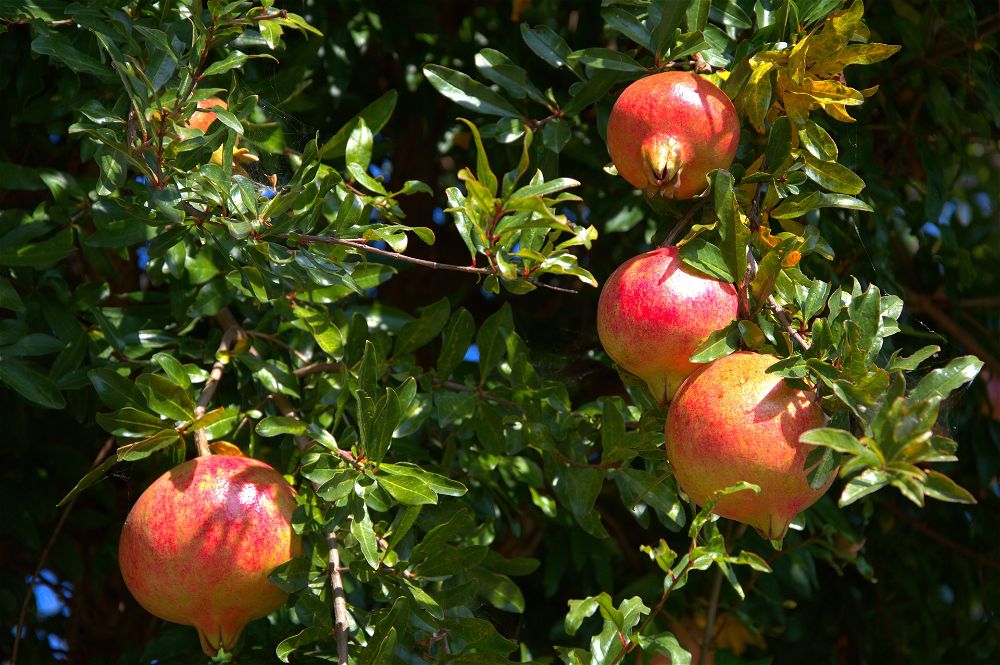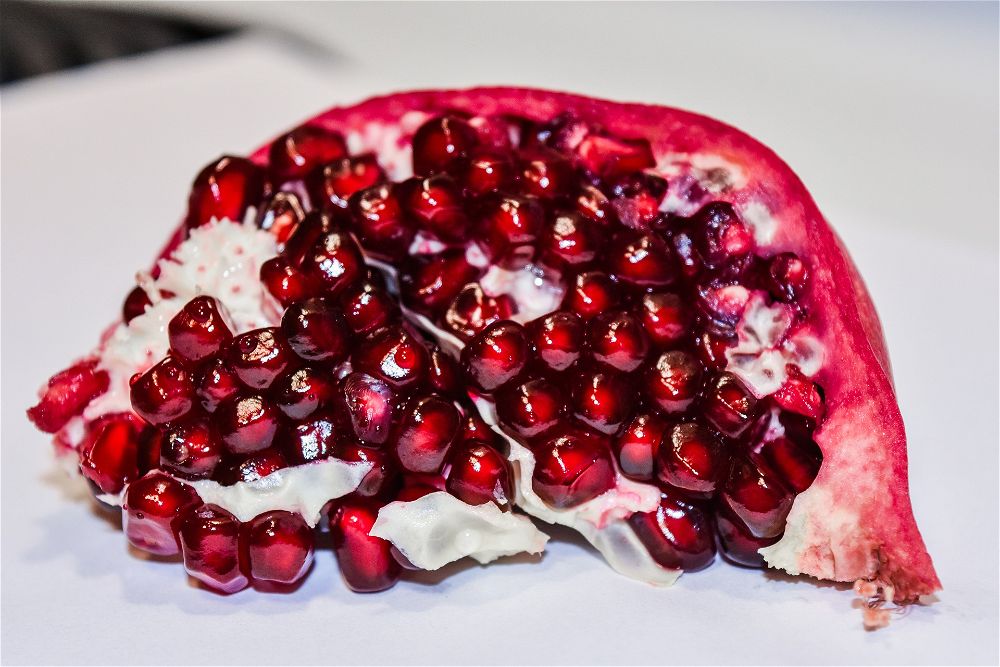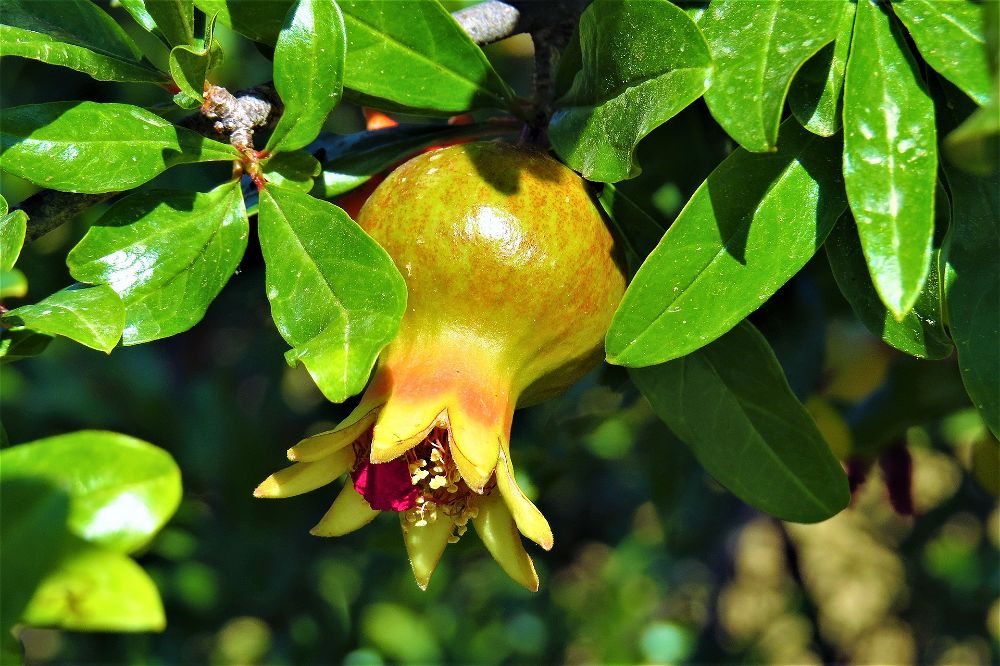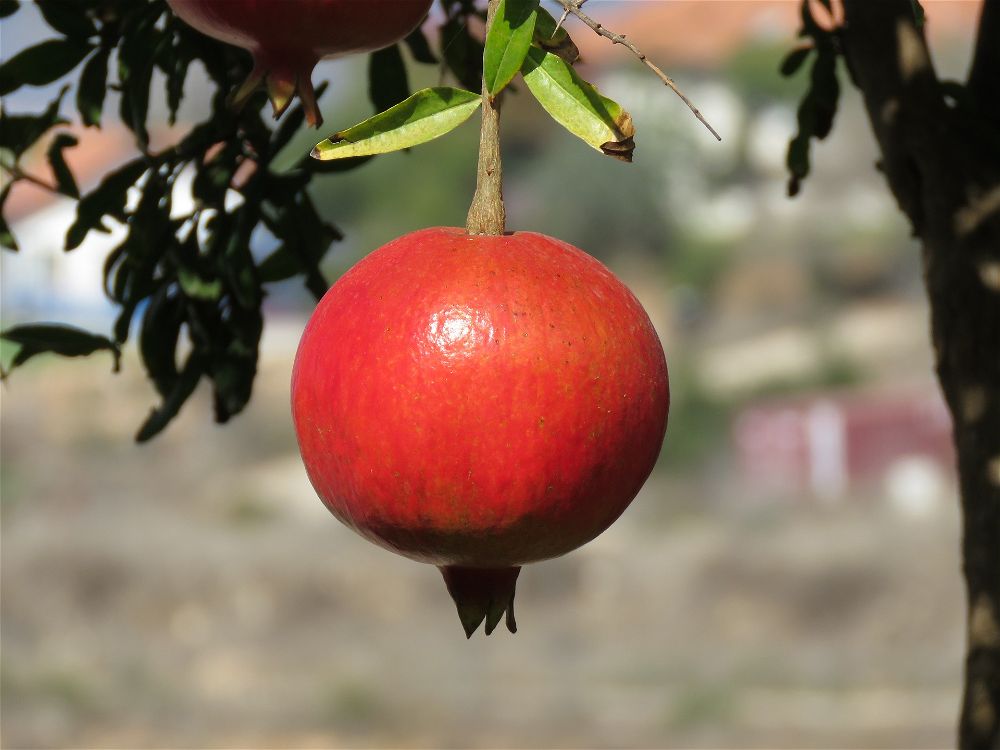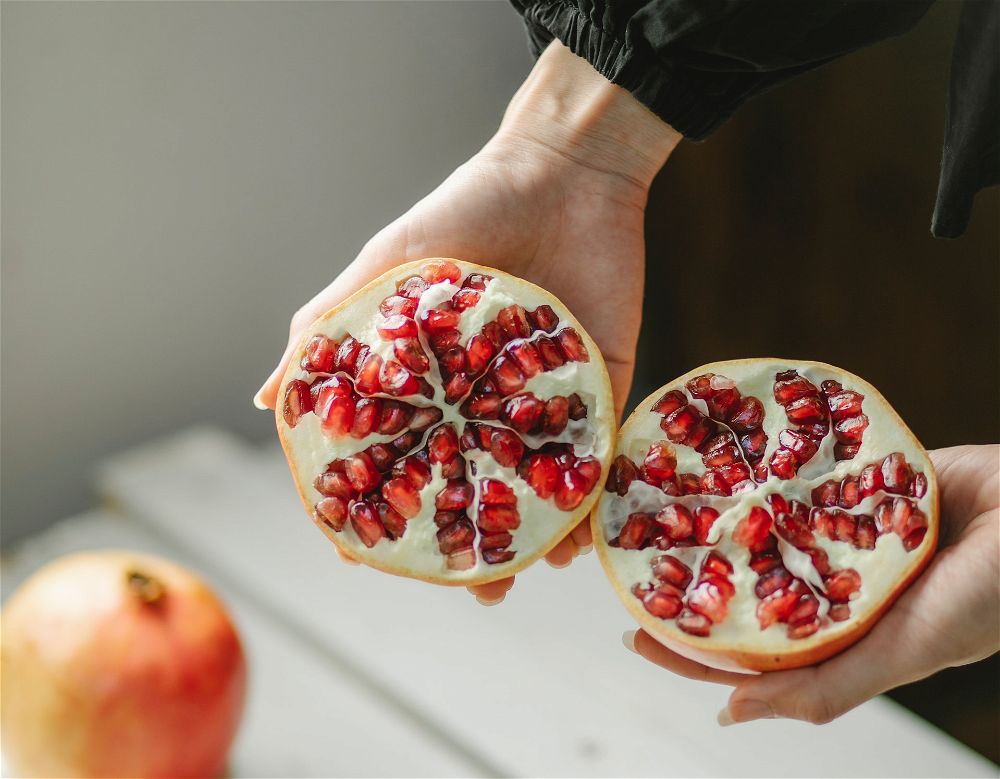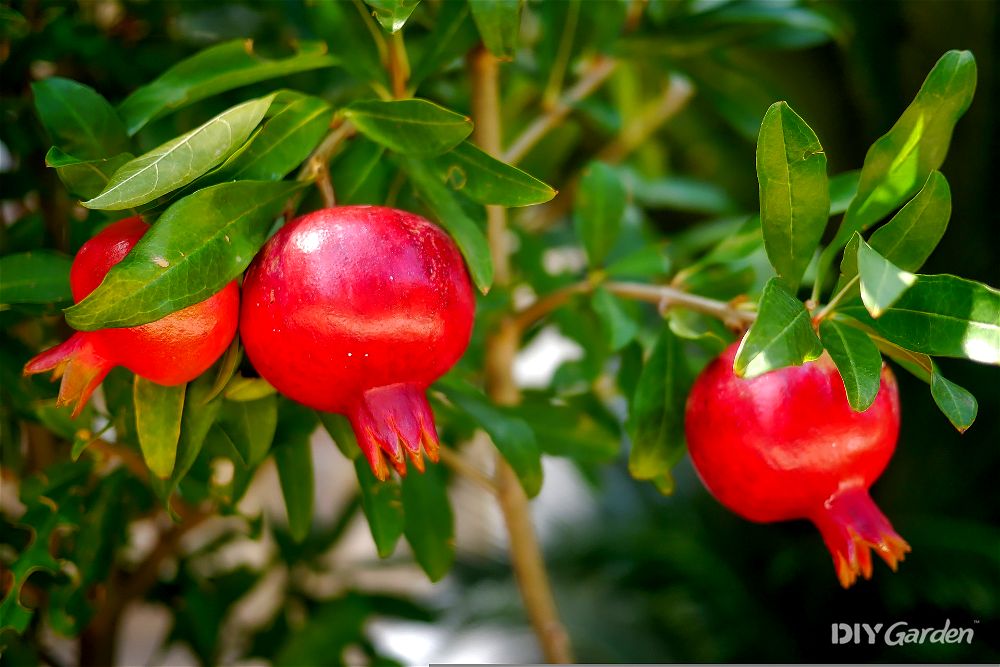
How to Grow Your Own Pomegranate Tree
Growing a pomegranate tree in the UK is a rewarding endeavor, despite the cooler climate. Pomegranate trees (Punica granatum) are more adaptable to different climates than many tropical plants and can tolerate some frost once established. However, they do need protection from the coldest weather.
Here’s how to grow a pomegranate tree in the UK:
1. Choose the Right Variety
- Select a hardier variety of pomegranate that can better withstand cooler temperatures. Varieties like ‘Provence’ and ‘Nana’ are more suited to the UK climate.
2. Start with a Healthy Plant
- It’s easier to start with a young pomegranate plant from a nursery rather than seeds. This gives you a head start and ensures the plant is already acclimatized to some extent.
3. Planting Time
- Plant your pomegranate tree in the spring after the last frost to avoid cold damage.
4. Select a Sunny, Sheltered Location
- Pomegranates need full sun to thrive and produce fruit. Choose a sheltered spot that gets at least 6 hours of direct sunlight daily. This will maximize fruit production and quality.
5. Soil and Planting
- Pomegranate trees prefer well-draining soil. If you have heavy clay soil, amend it with plenty of organic matter (such as compost) and some sand to improve drainage.
- Dig a hole twice as wide and just as deep as the root ball. Place the plant in the hole, backfill with soil, and water thoroughly.
6. Watering
- Water your pomegranate tree regularly during its first growing season to help establish a strong root system. Once established, pomegranates are quite drought-tolerant, but they will need extra water during dry spells, especially when fruiting.
7. Fertilizing
- Feed your pomegranate tree with a general-purpose fertilizer in the spring and mid-summer to encourage growth and fruiting.
8. Mulching
- Apply a layer of mulch around the base of the tree to retain moisture, suppress weeds, and protect the roots from temperature extremes.
9. Pruning
- Prune in late winter or early spring to remove any dead or damaged branches and to shape the tree. Pomegranates can be trained as a bush or a single-stemmed tree, depending on your preference.
10. Protecting from Cold
- In the cooler parts of the UK, it’s crucial to protect your pomegranate tree in winter. Young trees are particularly vulnerable to frost. Wrap the trunk with burlap and consider using a fleece cover or moving potted trees indoors to a frost-free place during the coldest months.
11. Harvesting
- Pomegranate fruits typically ripen in late summer to autumn. The fruit is ready to harvest when it has developed a deep color and makes a metallic sound when tapped.
12. Overwintering Potted Trees
- If you’re growing your pomegranate in a pot, move it indoors or to a greenhouse over winter to protect it from frost. Ensure it still gets plenty of light and reduce watering.
Growing Pomegranates: A Quick Snapshot
When to Sow – Dec-Feb
When to Plant – Apr-Jun
When to Harvest – Aug-Oct
Average Yield per Plant – 25-200 fruits/year
Spacing – 1-6m
Depth – 5-6mm
How to Grow a Pomegranate Tree at Home
Also known as the Carthaginian Apple because the Romans mistook it for a type of apple, pomegranates are actually classed as berries – open up that hard rind and you’ll find tiny ruby pearls that hold both seed and juice.
Compared to some other fruit trees, pomegranate trees are relatively low-maintenance and easy to grow…so long as you give them the right conditions to grow in. Here’s what you need to know:
Warm Temperatures & Full Sun
While some pomegranate trees may be able to handle temperatures down to -15ºC, they’ll all do so much better when given warmth. The optimum temperature range for a pomegranate tree is between 23-32ºC, and they should ideally be basking in this warmth for at least 120 days of the year. They do tolerate higher temperatures too – in Saudi Arabia, which is one of the areas where they come from, pomegranate trees can withstand summer heat of up to 48ºC.
At the same time, your pomegranate tree should also be getting full sun. This means at least 6-8 hours of direct sunlight a day. Any less than this and the limbs that it produces will be weak and spindly, while fruit production will be poor.
Enough Room to Grow
In their natural environment, pomegranate trees grow to about 4-6 metres in height, and will need a similar amount of space around them. However, don’t panic if you don’t have a large garden – whether you pick a dwarf variety that grows to just a metre tall or maintain a larger variety at shrub-size, there are plenty of options. Some gardeners even grow pomegranate trees as a hedge!
The key is making sure that you pick the right pomegranate tree for the amount of space that you’re able to give it.
How to Grow a Pomegranate Tree from Seed
Most people choose to purchase grafted pomegranate trees for their garden, as this guarantees a specific variety. When grown from seed, pomegranate trees may turn out to be very different from the parent plant. This means that you won’t know its size, growing requirements, or even fruit production capabilities beforehand.
That said, although it may be more of a gamble, growing a pomegranate tree from seed can be very rewarding. You may have to wait a little longer for it to produce fruit, but you could end up with a unique variety of your own.
It’s easy to save the seeds from a fresh pomegranate too – each fruit contains hundreds. Simply remove the flesh from each red pearl to reveal the small white seed within. Leave your seeds out for a few hours but don’t let them dry out completely. Then, follow these steps:
- Fill small pots with a 2:1 mix of compost and sand
- Sow one seed per pot, about 5-6mm deep
- Lightly water each pot to moisten the soil, but don’t overly soak it
- Place your pots somewhere warm – a heated propagator would be ideal. Pomegranate seeds need consistent temperatures of between 23-30ºC in order to germinate
It takes about six weeks for pomegranate seeds to germinate. Once yours have sprouted, move them somewhere sunny. Once they’re about 7-8cm in height, they’re ready to either be potted up or planted out into their final location.
How to Plant a Pomegranate Tree Outside
Before planting a pomegranate tree outside, it’s important to harden the plant off for a couple of weeks. This is especially true for those of you that live in cooler climates, as your plant will need some time to adjust to its new conditions.
Whether you’re planting a seedling or a potted tree, you’ll need to dig a hole that’s just slightly deeper than your plant’s root ball. Then, remove your pomegranate plant from its pot and tease out the roots. Sit it into the hole that you’ve dug, ensuring that top of the root ball is level with the surface of the soil. Fill the hole back in, firm the soil down, and then give your tree some water. You may need to add a bit more soil after this if the water causes your soil to sink slightly.
How to Plant a Pomegranate Tree in a Greenhouse
If you live in a cooler climate, then you’ll likely experience a bigger harvest if you grow your pomegranate tree in a greenhouse. This way, it will have access to more warmth and protection from the elements.
While dwarf pomegranate trees may seem like the obvious choice for a greenhouse, they also tend to be the least cold tolerant. If your greenhouse gets frosty in the winter, you may want to consider a larger cultivar that you keep trimmed to a certain size.
Either way, when planting a pomegranate tree in a greenhouse, follow the same steps as when planting outside, making sure to water your tree in well once you’re done.
How to Plant a Pomegranate Tree in a Pot
If your greenhouse is too crowded in the summer months to house a pomegranate tree, consider growing your tree in a pot instead. This way, you can start it off in your greenhouse in the spring, before moving it outside in the summer once temperatures heat up. You can then move it back into your greenhouse in the autumn to speed up the fruit ripening process.
A 45-litre pot would be sufficient for a dwarf tree or a compact variety, and will also be manageable when it comes to moving the container around.
How to Care for Pomegranate Trees
If you live in the Middle East, then your natural environment may be able to provide a pomegranate tree with all that it needs to thrive. However, for everyone else, you’ll need to give your tree a little extra care:
Watering Your Pomegranate Tree
Pomegranate trees come from a region that experiences hot, dry, and long summers. As a result, the tree is very drought-tolerant. That said, for maximum production, pomegranate trees need a regular supply of water. This doesn’t need to be much – a deep soaking every 2-4 weeks in the spring and summer will be sufficient, and this is only necessary for new trees that haven’t yet established.
Be careful that you don’t over-water your pomegranate tree. They hate soggy conditions, so too much water, or even just poor drainage, can lead to rot, diseases, and fruit problems.
Feeding Your Pomegranate Tree
Although pomegranate trees are relatively heavy feeders, a layer of fresh compost or well-rotted manure will be enough to provide your tree with all of its required nutrients for the year.
That said, if your pomegranate tree needs a boost, then a balanced 8-8-8 fertiliser applied in the spring and autumn will give it just that.
Pruning Your Pomegranate Tree
In its natural form, pomegranate trees grow in a shrub-like way, with multiple trunks. However, pruning them into more of a tree shape helps to encourage fruit production.
The best time to prune a pomegranate tree is in the late winter. Ideally, you want to catch that prime time before the tree starts budding up for the year, but once your risk of frost has passed.
Give your tree its first prune at the end of its first winter. This initial prune is important, as this is what will give your tree its shape. Leave the main trunk intact and cut everything but 4-6 branches away. Pomegranate trees bear fruit on old wood, so these branches will be your main fruit producers.
After this, prune your pomegranate tree every winter. Maintain its shape, remove any suckers, and get rid of dead wood. Crossed branches should also be pruned away.
How to Harvest Pomegranates
A pomegranate tree will start to produce fruit after two or three years.
The fruits start off green before turning pink/red once ripe. You’ll know that your pomegranates are ready to be harvested once they lose their glossiness and look matte. They’ll also be slightly hexagonal in shape, instead of having the roundness that they did when they were green, and they’ll sound quite metallic if you tap them. Ripe pomegranates also have a rougher texture and will feel heavy.
Since pomegranates stop ripening as soon as they have been picked, try to wait until yours have reached peak ripeness before harvesting.
As tempting as it may be, never pull a ripe pomegranate away from its tree. Instead, use a pair of shears to snip the stem just above the fruit – this prevents damaging the fruiting branches.
How to Store Pomegranates
Find a cool and dry place, spread your pomegranates out so that they aren’t touching, and they’ll keep for a few weeks. Keep them away from direct sunshine and make sure that they have plenty of ventilation to prolong their shelf life.
Alternatively, if you have enough room in your fridge, you’ll be able to keep your harvested pomegranates fresh for a couple of months.
If you’d like to store them for even longer, the seeds can be removed and frozen. Spread them out in an even layer to flash freeze, before placing them all into a bag or box. This way, you’ll be able to have access to the seeds as and when you need them, rather than having a big lump of pomegranate seeds to defrost.
How to Prepare & Cook Pomegranates
If you’ve never opened a pomegranate before, then this exotic-looking fruit can seem a little intimidating at first! Here’s what you’ll need to do:
- Use your hand to roll the pomegranate around on a chopping board – this helps to release the seeds from the flesh
- Cut the top of the pomegranate off
- Slice the fruit in half down the middle
- Slice through each of the white ridges to turn your halves into smaller segments
- Use a spoon to scoop the seeds out
Once you’ve had your fill of fresh pomegranate seeds (which may take some time!), here are a few other ways in which you can make use of the fruit:
- Pomegranate juice or smoothies
- As a topping for yoghurt, ice cream, or oatmeal
- A classic Middle Eastern pomegranate and feta salad
- Pomegranate molasses
- Mixed into baked goods
Common Pomegranate Tree Problems
Unlike many other fruit-producing trees, pomegranates aren’t usually affected much by pests and diseases. However, some that you could possibly encounter include:
- Aphids – these pests are most commonly a problem when pomegranate trees are grown in a greenhouse. In small numbers, they don’t cause much of an issue, but a large infestation can affect fruit production. Try washing them away with a strong jet from your garden hose, removing them by hand, or spraying them with a natural soap
- Leaf spot – this disease shows as dark marks on the leaves and fruits – it’s common in warm and dry environments. Remove any affected parts of the tree and then spray the rest of the tree with an organic fungicide
- Heart rot – this disease causes the interior of a pomegranate to slowly decay, meaning that there aren’t usually many external symptoms to spot early. The spores are spread by certain insects, as well as when fruits crack or split, so good pest management along with optimum growing conditions can help to prevent the disease from occurring
Popular Pomegranate Varieties to Grow
Here are some of the easiest, as well as the tastiest, pomegranate varieties to grow at home:
- Provence – one of the most cold-hardy varieties, this ancient French pomegranate thrives both in pots as well as in the ground
- Sweet – as you may have guessed from the name, this variety is known for its sweetness, as well as for fruits that ripen slightly earlier in the season
- Nana – a dwarf variety that grows to just a few feet in height
- Kazake – another cold-hardy variety from Japan, which has quite a compact growing habit
- Salavatski – a cold-tolerant Russian variety that produces large orangey-red fruits
- Tom’s Red – one of the first pomegranate varieties to ripen in the season
Conclusion
Although their native home may be hot and dry, pomegranate trees are surprisingly versatile – so long as you can meet their basic requirements, then chances are that they’ll grow well for you. Whether you go with a large majestic tree that you plant in your garden, or a dwarf variety that you keep in a pot, give your pomegranate tree the right amount of love and you’ll be rewarded with a bigger and better crop as each year progresses.
FAQ
Do you need two pomegranate trees to produce fruit?
Although pomegranate trees are cross-pollinated by insects, they’re also self-pollinated. This means that you don’t need two pomegranate trees to produce fruit, although having two trees in close proximity can help to increase yields.
How quickly do pomegranate trees grow?
Pomegranate trees grow quite quickly when given the right conditions. Expect to see growth of around 20-60cm per year.
How long does it take for a pomegranate tree to produce fruit?
A pomegranate tree needs to be about two or three years old before it will start to produce fruit. Your first few harvests won’t be much, but yields will continue to increase each year.
